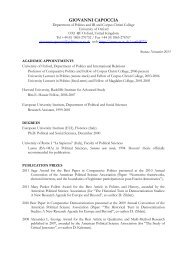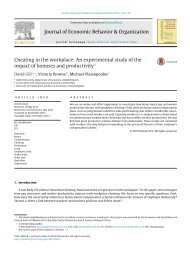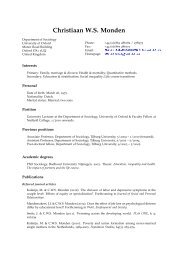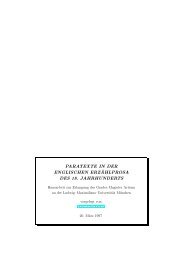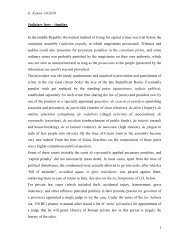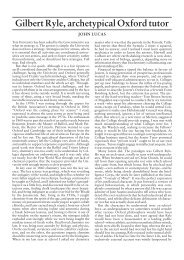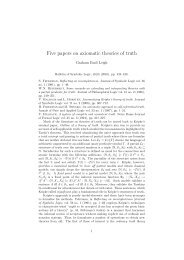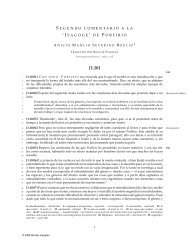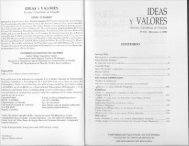Lexical Functional Grammar - Personal Pages Index
Lexical Functional Grammar - Personal Pages Index
Lexical Functional Grammar - Personal Pages Index
Create successful ePaper yourself
Turn your PDF publications into a flip-book with our unique Google optimized e-Paper software.
(3) Anna såg boken.<br />
Anna saw book.def<br />
‘Anna saw the book.’<br />
IP<br />
NP<br />
I ′<br />
N ′<br />
I<br />
VP<br />
N<br />
Anna<br />
Anna<br />
såg<br />
saw<br />
V ′<br />
NP<br />
N ′<br />
N<br />
boken<br />
book.def<br />
Nonhead daughters are also only optionally present. In Japanese and other<br />
so-called “pro-drop” languages, a verb can appear with no overt arguments.<br />
If no overt arguments of a verb are present, the c-structure tree contains only<br />
the verb. As a relatively free word order language, Japanese makes use of the<br />
exocentric category S, and so an utterance S can consist of a single constituent<br />
of category V:<br />
(4) koware-ta<br />
break-PAST<br />
‘[It/Something] broke.’<br />
S<br />
V<br />
kowareta<br />
break.PAST<br />
C-structure does not contain subparts of words or unpronounced features, nor<br />
does it contain null pronominals in pro-drop languages like Japanese. Rather,<br />
it reflects the structure and grouping of the full syntactic units – the words and<br />
phrases – in the sentence.<br />
2.2 Phrase structure rules<br />
LFG draws a strong distinction between the formal objects of the theory —<br />
constituent structure trees and functional structures — and the constraints or<br />
descriptionsinvolvingthoseobjects. C-structuretreesareconstrainedbyphrase<br />
structure rules, which license local tree configurations. The phrase structure<br />
rule in (5a) licenses the c-structure in (5b):<br />
5



